Fluid Retention Risk Calculator
Your fluid retention risk is based on the combination of alcohol consumption, sodium intake, and hydration habits.
Stay within moderate drinking limits and maintain proper hydration.
Key Takeaways
- Alcohol interferes with the antidiuretic hormone (ADH), causing the kidneys to retain water.
- High sodium intake while drinking amplifies swelling and puffiness.
- The liver’s ability to process alcohol determines how much fluid builds up in the abdomen.
- Moderate drinking combined with proper hydration can limit unwanted retention.
- Simple lifestyle tweaks-like balancing electrolytes and limiting binge patterns-help keep fluid balance steady.
Ever notice that after a night of drinking your face looks a bit puffy, your shoes feel tighter, or you wake up with a bloated belly? That’s not just a random side effect; it’s your body’s fluid‑balance system reacting to alcohol consumption. In this guide we’ll unpack why that happens, which hormones and organs are involved, and what you can do to keep the extra water in check.
Alcohol consumption is a behavior that introduces ethanol into the bloodstream, triggering metabolic and hormonal pathways that directly influence how the body handles water. When you drink, the balance between fluid intake, output, and storage shifts dramatically, often leading to unwanted retention.
Fluid retention (edema) refers to the accumulation of excess water in the body’s tissues, particularly in the low‑erminal vessels of the legs, face, and abdomen. Understanding the connection between these two phenomena helps you make smarter choices at the bar and at home.
1. Alcohol’s Direct Impact on Water Balance
When ethanol hits your stomach and small intestine, it’s absorbed rapidly into the bloodstream. About 20% is metabolized in the stomach by the enzyme alcohol dehydrogenase, while the remaining 80% travels to the liver for processing. This metabolic cascade consumes a lot of water because every gram of alcohol requires roughly 1.2ml of water to be broken down into acetaldehyde and then acetate.
At the same time, alcohol acts as a mild diuretic-initially prompting the kidneys to excrete more urine. Paradoxically, this diuretic effect is short‑lived because alcohol also suppresses the release of antidiuretic hormone, which we’ll explore next.
2. The Antidiuretic Hormone (ADH) Connection
Antidiuretic hormone (ADH) is a peptide hormone released by the pituitary gland that tells the kidneys to re‑absorb water back into the bloodstream. Under normal conditions, ADH fine‑tunes how much water you lose in urine.
Alcohol inhibits ADH secretion, meaning that initially you pee more. However, once the alcohol level drops, ADH rebounds sharply, telling the kidneys to hold onto water. This rebound effect is why you often wake up feeling both dehydrated and bloated. The timing matters: a binge session triggers a strong ADH dip followed by an over‑compensating surge, creating a fluid‑retention “hangover” phase.
3. Sodium, Electrolytes, and Kidney Function
Sodium is an essential electrolyte that regulates fluid distribution inside and outside cells plays a starring role in retention. Alcohol often leads people to snack on salty foods-think peanuts, chips, or pizza. The excess sodium pulls water into the extracellular space, making swelling more noticeable.
The kidney filters blood, balances electrolytes, and controls urine output struggles under this double whammy: reduced ADH and high sodium load. The kidneys try to excrete the extra salt, but the lingering ADH surge forces them to keep water, resulting in a net gain of fluid.
Other electrolytes-potassium, magnesium, and calcium-also shift during heavy drinking. Low potassium, for instance, can worsen muscle cramps and make the retained fluid feel “tight”. Monitoring electrolyte intake can blunt the swelling effect.
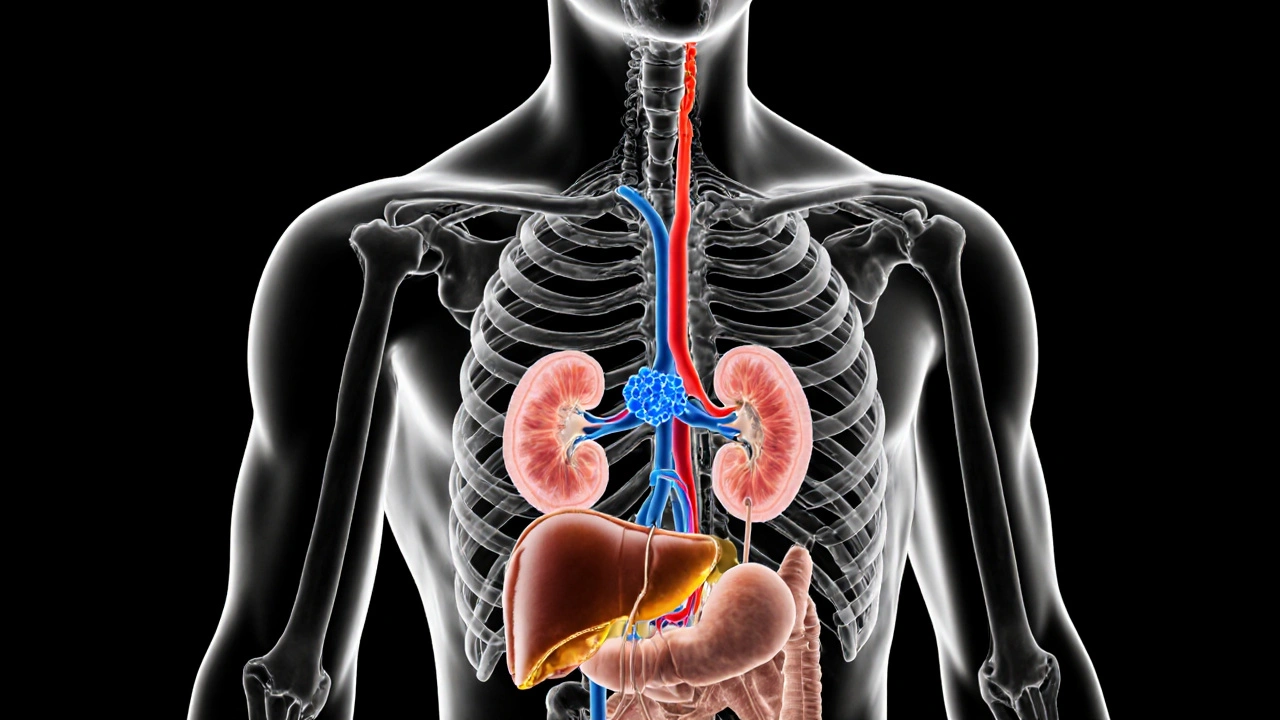
4. Liver Health and Alcohol‑Induced Edema
The liver is the primary organ responsible for metabolizing ethanol into less harmful compounds. When you consume alcohol faster than the liver can process it, toxic metabolites build up, leading to inflammation.
Chronic heavy drinking can cause fatty liver, hepatitis, or cirrhosis. These conditions impair the liver’s ability to produce albumin-a protein that maintains oncotic pressure in blood vessels. Low albumin draws fluid out of the vessels and pools in the abdomen (ascites) and legs.
Even a single episode of heavy drinking can temporarily raise liver enzyme levels, subtly reducing albumin production and contributing to that “puffy” feeling the next day.
5. Dehydration vs. Retention: Why You Feel Puffy
It sounds contradictory, but dehydration and fluid retention often coexist after drinking. The initial diuretic phase flushes out water, thinning blood plasma. When ADH rebounds, the body tries to restore volume quickly, holding onto any water that returns from the gut or from the food you ate.
This tug‑of‑war explains two common symptoms:
- Dry mouth and headache: Classic signs of dehydration.
- Swollen ankles or a bloated face: Result of retained water in interstitial spaces.
Recognizing both sides helps you treat the hangover effectively-replenish fluids, but also balance electrolytes and avoid excess salty snacks.
6. Practical Tips to Manage Fluid Balance When Drinking
- Hydrate before, during, and after alcohol. Aim for one 250ml glass of water for each alcoholic drink.
- Choose low‑sodium mixers. Skip salty snack platters; opt for fresh vegetables or fruit.
- Consume foods rich in potassium. Bananas, avocado, and leafy greens help counteract sodium‑induced swelling.
- Limit binge patterns. Spacing drinks to one per hour reduces the ADH swing.
- Consider a light diuretic. Herbal teas like dandelion or a pinch of magnesium can assist fluid excretion without over‑drying.
- Watch your total weekly intake. The Australian guidelines suggest no more than 10standard drinks per week, with no more than 4 on any single day.
Implementing even a few of these steps can dramatically cut down the “puffy” after‑effects while still letting you enjoy a night out.
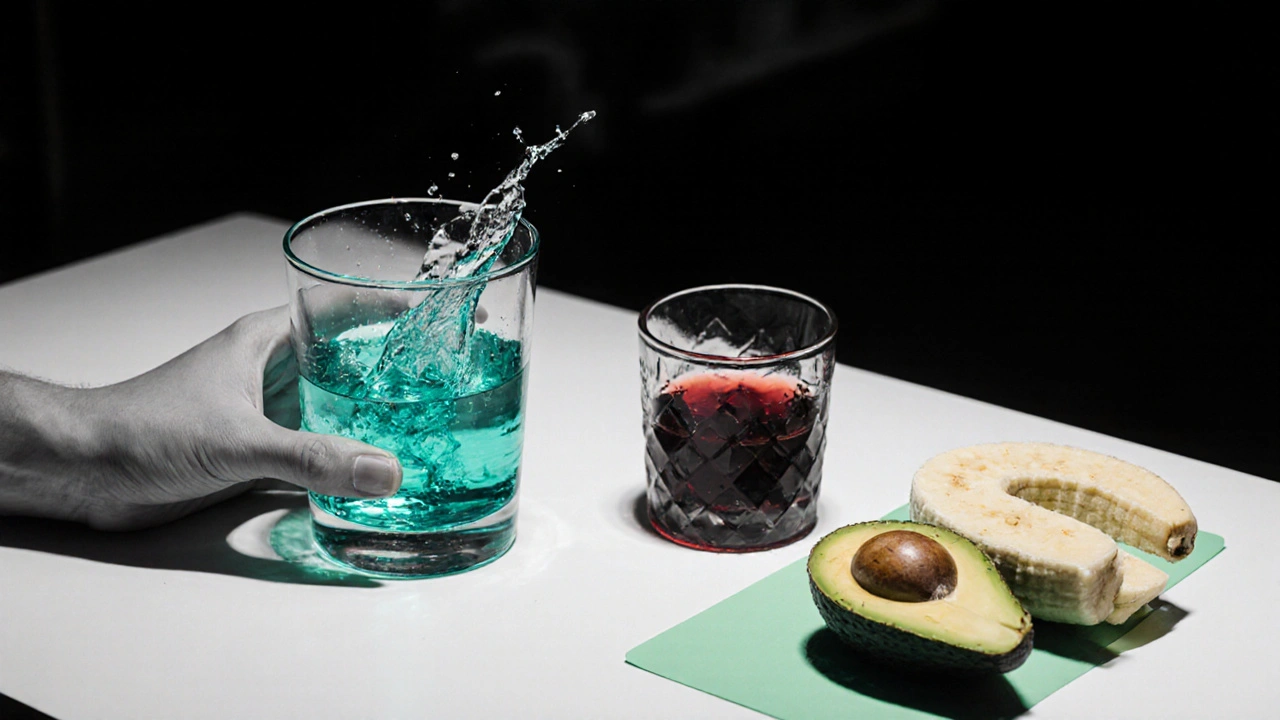
Alcohol Intake Levels and Typical Fluid Retention Effects
| Intake Level | ADH Response | Sodium Influence | Common Symptoms |
|---|---|---|---|
| Light (1‑2 drinks) | Modest ADH dip → quick rebound | Minimal if food is balanced | Light thirst, mild facial puffiness |
| Moderate (3‑4 drinks) | Noticeable ADH suppression, stronger rebound | Often paired with salty bar snacks → higher retention | Dry mouth, ankle swelling, bloated abdomen |
| Heavy/Binge (5+ drinks) | Sharp ADH drop then overshoot, prolonged retention | Elevated sodium intake common → edema | Severe dehydration, pronounced puffiness, possible headache |
Bottom Line
Alcohol doesn’t just hit your liver; it messes with the hormonal signals, electrolyte balance, and kidney function that keep your body’s water levels steady. By understanding the chain-ADH suppression, sodium pull, liver protein shifts-you can spot the early signs of fluid overload and take steps to prevent it. Smart hydration, balanced electrolytes, and moderated drinking are the trifecta for staying clear‑headed and not waking up looking like a balloon.
Frequently Asked Questions
Why does my face look puffy after a night of drinking?
Alcohol suppresses ADH, then triggers a rebound that tells your kidneys to retain water. Combined with any salty food you ate, extra fluid pools in the facial tissues, causing that puffiness.
Can I prevent fluid retention by drinking more water?
Yes. Consistent water intake dilutes the concentration of alcohol in your blood, helps the kidneys filter out excess sodium, and reduces the severity of the ADH rebound.
Is there a safe amount of alcohol that won’t cause any retention?
Even low amounts can trigger a mild ADH dip, but staying within the Australian guideline of up to 10 standard drinks per week and drinking slowly minimizes noticeable fluid shifts.
Do electrolytes supplements help after drinking?
A balanced electrolyte drink can replace the potassium and magnesium lost through urine and counteract sodium‑induced swelling. Choose low‑sugar, low‑sodium options for best results.
Can chronic alcohol use cause permanent edema?
Long‑term heavy drinking can damage the liver, lowering albumin production and leading to chronic ascites and peripheral edema. Reducing alcohol intake and seeking medical help are essential.

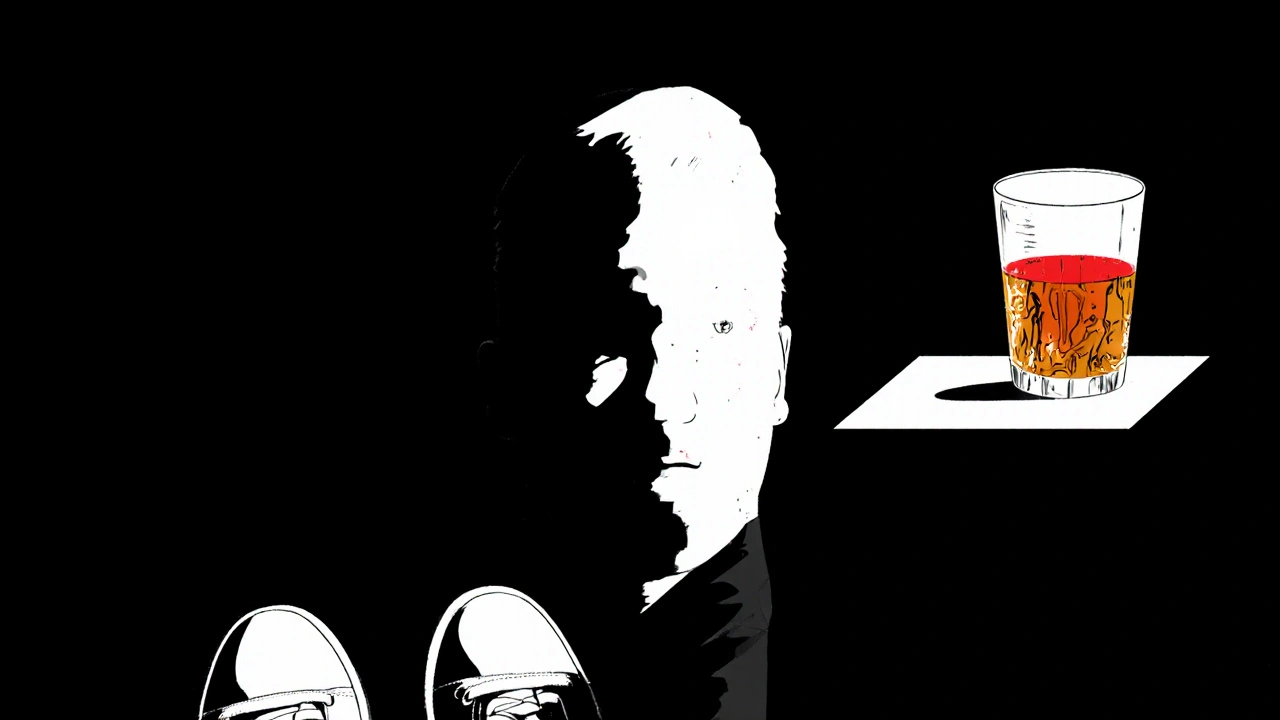
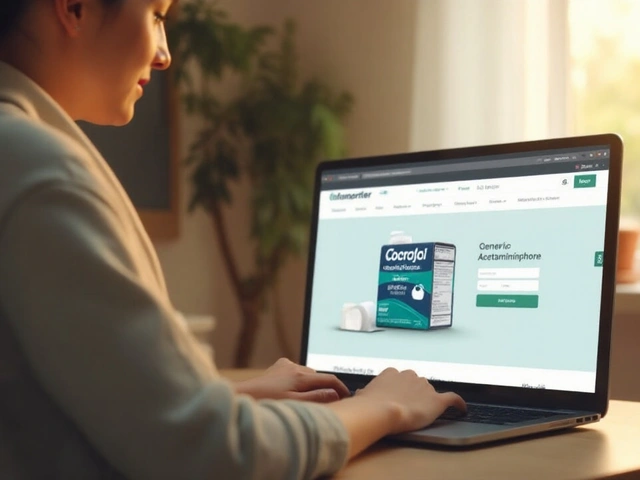

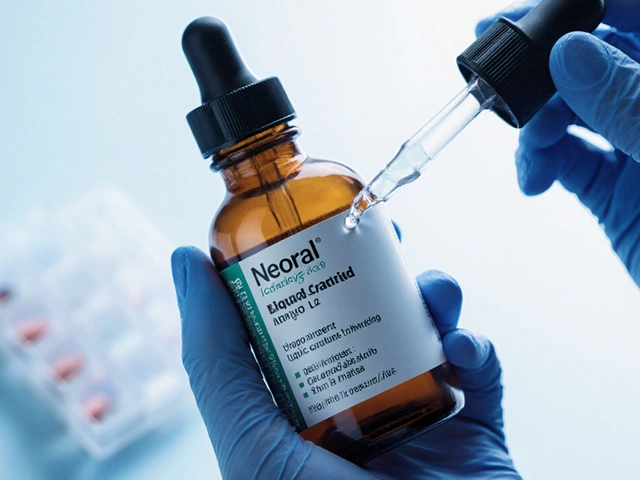

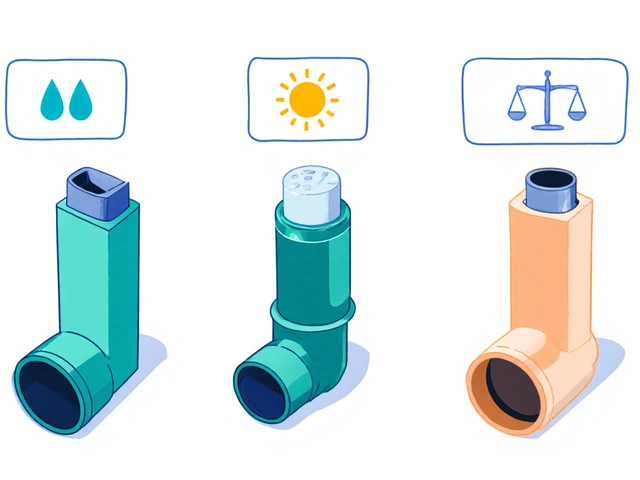
Brandi Hagen
October 16, 2025 AT 18:03American bodies love a good night out, but the science behind that dreaded post‑drink puffiness is worth a second look 😃. When ethanol slips into the bloodstream, the pituitary gland gets a subtle shove to shut down antidiuretic hormone, and the kidneys suddenly think they are on vacation. The immediate result is a flush of urine that makes you feel like you’ve emptied the tank, only to have ADH roar back like a patriotic eagle on the other side of the night. That rebound forces the kidneys to hoard every last drop of water, turning your face into a balloon that could rival the Statue of Liberty. Add a side of salty peanuts, and the sodium grabs onto the water like a clingy friend at a Fourth of July barbecue, pushing fluid into the tissues. Your liver, that tireless American workhorse, tries to metabolize the alcohol, but every gram costs about 1.2 ml of water, further swelling the internal reservoir. If the liver is already taxed, albumin production dips, and you’ll notice water seeping into the abdomen as a subtle ascites that no one wants at a family reunion. Hydration before the party is like seasoning the grill before the steak- it sets the stage for a smoother combustion of the booze. A simple rule of thumb for any red‑white‑blue patriot is one 250 ml glass of water for every alcoholic drink, which keeps the kidneys from over‑reacting. Choosing low‑sodium mixers is another tactical move; swapping soda for sparkling water is as smart as swapping a cheap sedan for an American‑made pickup. Potassium‑rich foods such as bananas or avocado act like the Uncle Sam of electrolytes, pulling the excess sodium out of the extracellular space. If you spread your drinks over at least an hour, the ADH swing flattens, and the body can maintain a steadier fluid balance without the dreaded morning puff. A dash of magnesium or a cup of dandelion tea can act as a gentle diuretic, but be careful not to over‑dry, because dehydration and retention love to tango together. Remember that the Australian guidelines of ten standard drinks per week are a universal sanity check- even the most spirited American should respect them. Implementing any three of these tactics will cut the swelling by a noticeable margin, leaving you looking fresh rather than like a blown‑up party balloon. So raise your glass responsibly, stay hydrated, and let the only thing that rises be your spirits, not your facial puffiness 😎.
Super Mom
October 27, 2025 AT 15:23Staying on top of hydration is the single biggest game‑changer when you’re planning a night out. Grab a water bottle and make a pact to sip one ounce for every alcoholic ounce – it’s a tiny habit that pays off big time. Keep a few potassium‑rich snacks like banana slices or a handful of almonds on hand, and you’ll neutralize the salty bar bites that love to swell your ankles. If you notice a little puffiness the next morning, a gentle walk in fresh air can stimulate circulation and help the excess fluid move out faster. Remember, the goal is to enjoy the party, not to wake up looking like a balloon.
debashis chakravarty
November 7, 2025 AT 12:43The article correctly identifies ADH suppression as a core mechanism, yet it glosses over the fact that individual variability can drastically alter outcomes. Not every drinker experiences the same rebound intensity; genetics, baseline kidney function, and chronic alcohol exposure all modulate the response. Moreover, the suggestion to "consider a light diuretic" is dangerously vague – unsupervised herbal diuretics can precipitate electrolyte imbalances. While the sodium‑potassium interplay is well‑described, the piece neglects the role of magnesium in stabilising cellular membranes during alcohol‑induced stress. In sum, a more nuanced exposition would better serve readers seeking practical, safe guidance.
Daniel Brake
November 18, 2025 AT 10:03Think of the body as a delicate orchestra, each hormone a instrument playing its part. When alcohol steps onto the stage, ADH quiets down, and the kidneys improvise by holding onto water. The resulting crescendo of swelling is a reminder that balance, not excess, is the true conductor of health. Observing these subtle shifts can guide us toward more mindful drinking habits.
Suzi Dronzek
November 29, 2025 AT 07:23One cannot simply dismiss the moral dimension of over‑indulgence; excessive drinking reflects a disregard for one’s own bodily stewardship. The physiological cascade described is a direct consequence of that negligence. By ignoring sodium‑laden accompaniments, individuals willingly invite edema as a self‑inflicted penalty. It is incumbent upon each of us to respect the limits our bodies set, lest we suffer the visible bruises of our excess. Discipline in consumption is as much an ethical choice as it is a health one.